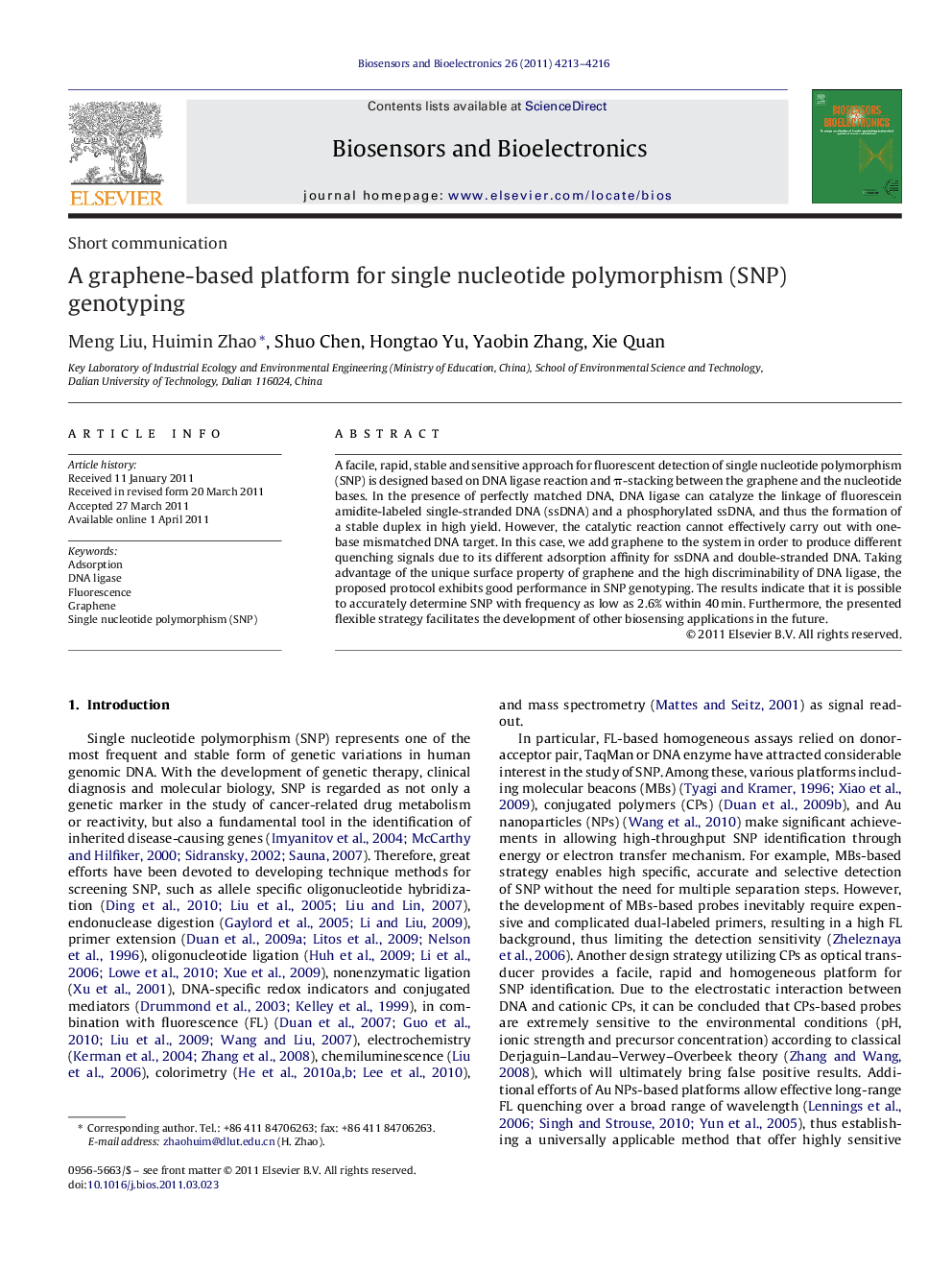| Article ID | Journal | Published Year | Pages | File Type |
|---|---|---|---|---|
| 868251 | Biosensors and Bioelectronics | 2011 | 4 Pages |
A facile, rapid, stable and sensitive approach for fluorescent detection of single nucleotide polymorphism (SNP) is designed based on DNA ligase reaction and π-stacking between the graphene and the nucleotide bases. In the presence of perfectly matched DNA, DNA ligase can catalyze the linkage of fluorescein amidite-labeled single-stranded DNA (ssDNA) and a phosphorylated ssDNA, and thus the formation of a stable duplex in high yield. However, the catalytic reaction cannot effectively carry out with one-base mismatched DNA target. In this case, we add graphene to the system in order to produce different quenching signals due to its different adsorption affinity for ssDNA and double-stranded DNA. Taking advantage of the unique surface property of graphene and the high discriminability of DNA ligase, the proposed protocol exhibits good performance in SNP genotyping. The results indicate that it is possible to accurately determine SNP with frequency as low as 2.6% within 40 min. Furthermore, the presented flexible strategy facilitates the development of other biosensing applications in the future.
